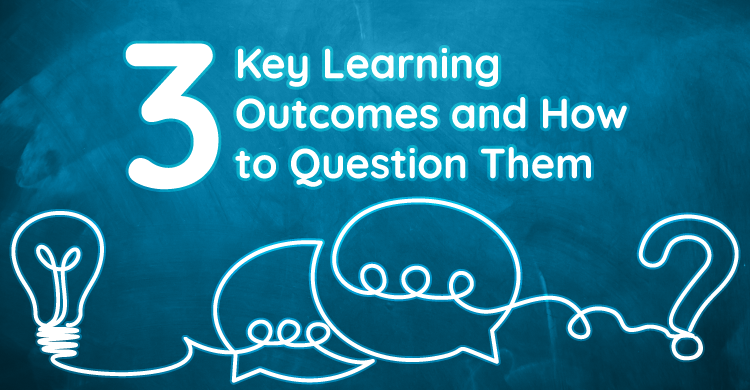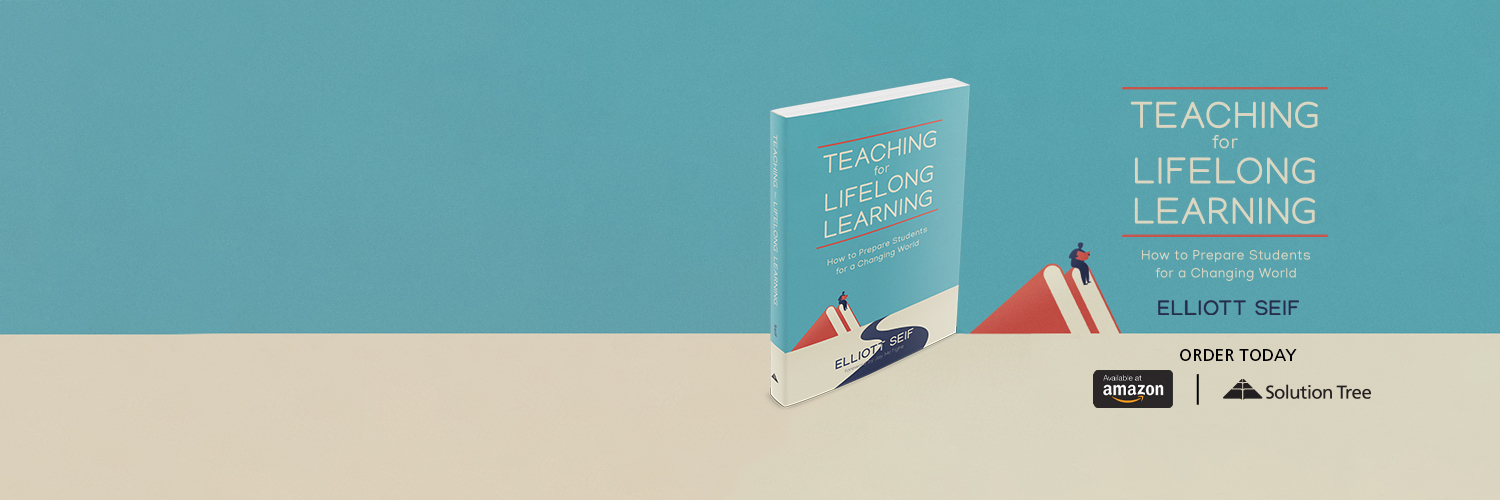Over the years, I’ve worked with many teachers at all levels, and one of the biggest surprises to me is how often teachers have difficulty articulating their primary, key, essential, and core goals for their students. Administrators also often have trouble articulating the core learning outcomes for students at their school. These educators often say that state standards are the source of their teaching outcomes. And yet, they have trouble articulating which specific standards are to be prioritized—and the standards they do refer to are frequently unclear, confusing, very complex, or vague.
This lack of clarity is surprising in light of the obvious need for teachers, schools, and districts to be clear about what they want to accomplish with their students and how they will ensure that expected outcomes are met and measured. In some districts, core outcomes are stated as having students do well on standardized tests as opposed to core learning goals that reflect the needs of students in our fast-paced, changing, uncertain culture and environment!
Without a clear purpose for teaching and a few key outcomes for learning, teaching is likely to drift, become diffuse, be difficult to assess, and even become ineffective.
Sharing core outcomes to inspire student growth
The strongest teachers often are passionate about their goals for students. They see themselves on a mission: to create a love of and passion for learning history, mathematics, or science; to help their students become mathematical problem solvers; to develop critical thinkers; to open students’ minds to different perspectives; to be good researchers; to learn and understand how to investigate scientifically; to develop each individual’s artistic talent; to create effective readers and writers; to spark creativity, to promote wellness and healthy living. These teachers not only have a clear set of core outcomes but spend much of their time figuring out how to teach and assure student learning and growth toward these outcomes.
So, here’s the obvious implication: every teacher should have relatively few core outcomes that drive his or her teaching and learning. Teachers at all levels, in all grades, and in all subjects should be clear about and share their outcomes and expectations with their students—either directly or through a translation into a perplexing question that guides learning.
Pave The Way for Achievement With a Core Mission
If you are a teacher, here’s your chance to consider this important question: What is your core mission? While you may have many teaching goals and objectives, can you identify one or a few really critical outcomes that you expect all your students to achieve?
As you describe and develop your core mission, take a few minutes to think about the following key outcomes that, in my view, every teacher should consider as critical for preparing students for living in a changing and uncertain world:
A Growth Mindset That Sparks Curiosity
How can students develop and maintain an interest in learning? How can students learn to relish a challenge or delve into a thoughtful, provocative question, examine it carefully, and come up with answers and solutions? How can we build a ‘love of learning’ in our students that will carry on into the future?
What core concepts direct understanding?
What is critical for your students to understand? At the end of their time with you, what should students know? What are the core lessons for a course, series of units, and your subject area? At the elementary level, what is the core set of key understandings and associated knowledge for students to learn across the content areas? At the secondary level, what are the core, critical understandings and associated knowledge for a subject?
Building a Strong Foundation of Skill Sets
What skills should we attempt to ensure student competence? Consider the following lifelong learning skill sets:
- Developing understanding
- Conducting research, investigation, and inquiry
- Thinking critically and creatively
- Communicating effectively
- Collaborating
- Each skill set has multiple components and options, and how they get integrated into learning will vary depending on the subject, grade level, type of activity, and other factors, such as their independence and initiative (e.g., How can students apply their developing skills to new and novel situations? How might they develop ways to deepen their learning on their own?) or their natural talents and interests (e.g., How can we help students develop their talents, broaden and enrich their interests, and/or foster their passions?)
8 Methods to Question and Analyze Your Results
Once you have identified core student outcomes, here are eight sub-questions to examine and interrogate your ideas. Do you want to stick with these outcomes or change them?
- Significance: Are they powerful outcomes that will make a significant difference? Do they help students to adapt to a rapidly changing world? If you can’t really justify their significance, go back and rethink it.
- Impact: If your students accomplished these outcomes, what would be their impact on them, their future, or the world?
- Outcomes in practice: Can you operationalize these outcomes or define them, describe them in detail and practice?
- Making progress: How will you know if students are making progress? What would you look for? What kinds of feedback would you give them?
- Measures of success: How will you know if your students accomplished these outcomes? What kind of work would they produce? What would suggest progress and success? As you think about this, consider the many different types of assessments: tests and quizzes, performances and presentations, checks for understanding, inquiry, scientific investigations, discussions, self-reflection, projects, etc.
- Engagement and motivation: How will you engage students and motivate them to accomplish their goals? How will students be involved? What activities will help them succeed?
- Unique to a teacher or collaborative: Are the core outcomes unique to an individual teacher, or is it also part of a school or district’s explicit mission? Can many in a school help to support their development? If the outcomes go beyond an individual teacher and are grade-level or schoolwide, should there be measures of success that transcend individual classrooms?
- New approaches: What might teachers do differently to ensure the core outcomes are accomplished? What could they do to work together?
Empower Your Students: Clear Goals For Brighter Futures
Once there is clarity on a few key outcomes, think about what it will look like to work toward those outcomes in practice. If a key goal is to develop a love of learning, what will that mean for teaching? Will there be more emphasis on raising questions or providing puzzles and mysteries? Will students have greater opportunities to sort and classify information into bigger ideas? Will there be discussions that help students better organize, synthesize, and interpret information?
In sum, clarifying core outcomes helps teachers focus teaching and student learning on what they believe is really important for student success. It behooves each teacher to improve key student skills over time so students are engaged, motivated, and successful when assessed. Teachers must be explicit about what is important and build collaborative networks to support these important outcomes. This makes teaching much more meaningful and promotes the type of passionate learning students need to succeed in a 21st-century world.
Developing, prioritizing, and teaching to a clear set of outcomes that drive learning and help prepare students for a rapidly changing, uncertain world should be a key goal of each teacher and every school.
About the educator
Elliott Seif, PhD, is an educational presenter, author, school volunteer, and public school advocate. In his book Teaching for Lifelong Learning: How to Prepare Students for a Changing World, he identifies and describes various specific ways to develop the key outcomes explored above and details how to put them into practice in schools and classrooms. These include:
- A description of four key goals of a lifelong learning education
- Definitions and many specific examples of key understandings and essential questions
- A four-phase framework to plan instructional activities that enable teachers to effectively teach key understandings and skills
- Sample types of activities that engage students help implement specific goals and deepen learning
- Ways to use a variety of formative and summative assessments to assess and improve key learning outcomes
- How to analyze, modify, select, and design a lifelong learning curriculum







